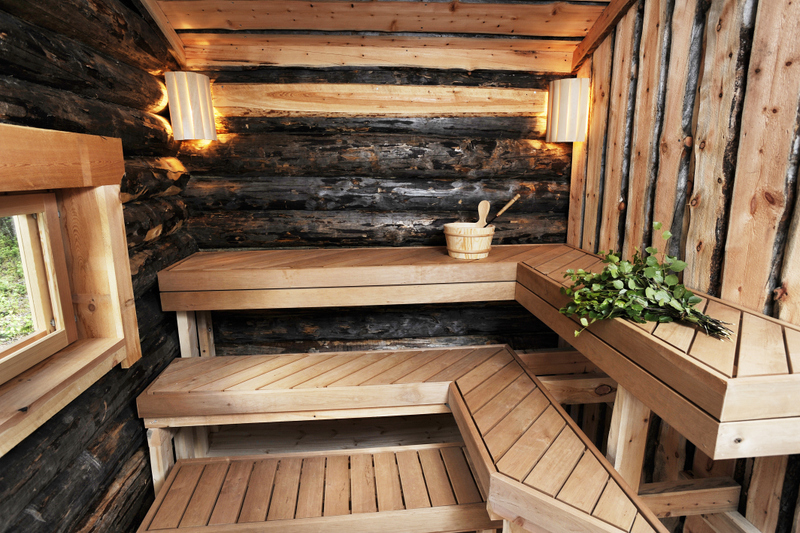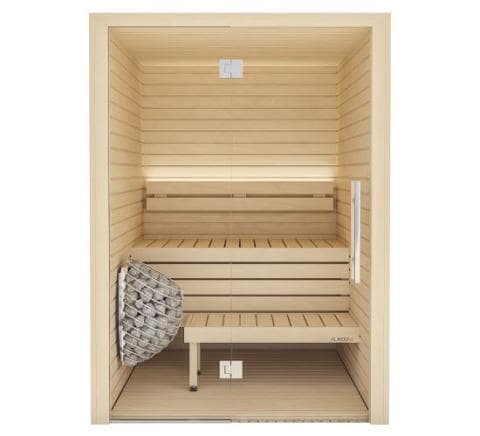The Definitive Guide to Traditional Sauna
The Definitive Guide to Traditional Sauna
Blog Article
Traditional Sauna Fundamentals Explained
Table of ContentsA Biased View of Traditional SaunaFacts About Traditional Sauna UncoveredSome Of Traditional SaunaTraditional Sauna Fundamentals ExplainedTraditional Sauna Things To Know Before You Get This
Many of the weight shed in a sauna is water loss and is re-gained upon rehydrating. Without an uncertainty sauna can be a vital part of a healthy and balanced weight loss program. To take a look at the differences between traditional and IR saunas, I will divide these right into verifiable, academic, and made differences.Hence, the hottest point in the saunawhich goes to the ceiling straight above the sauna heateris commonly between 185 and 190 F. Claims that a conventional sauna surpasses 200 F is simply not true and not suitable for electrical saunas marketed in the United States. The temperature level for a far-infrared sauna is usually set in between 120 and 140 F; nevertheless, unlike the conventional sauna, the objective in and IR space is not to achieve a high temperature level.
Due to this, the temperature distinction is virtually pointless, given that extreme sweating leads to both sauna types, but the technique of warming the body is various. In an IR sauna the bather will really feel warm and will sweat a lot, however at a lot lower temperature levels (Traditional Sauna). Thus, if the objective is to invest longer durations of time in the sauna, the IR sauna is an excellent option
When a traditional sauna has been effectively warmed, the sauna walls are cozy, the air temperature level has actually achieved established temperature and the rocks are extremely heated. As an interesting side note, the heated wall surfaces and the rocks are discharging far-infrared warmth, incorporated with the warmed air, to develop an "wrapping up heat".
Traditional Sauna Can Be Fun For Anyone

When the high temperature level is accomplished, the components cycle on and off to maintain the heat. The majority of standard sauna users appreciate putting water over the rocks to create steam to elevate sauna moisture degrees. The advantages of pouring water over the rocks consist of: making the area much more comfortable, moistening the nasal flows, and enabling the usage of aromatherapy by blending necessary oils with the water.

When the power goes into the body, it triggers the body temperature to increase More about the author and inevitably results in perspiration. In an infrared sauna it is very important for the emitters/heaters to continue to be on nearly frequently. Considering that there is no mass of rocks to retain warmth, the sauna will certainly cool down if the emitters shut down.
As stated above, the sauna bather in an infrared room wants to place himself before operating emitters to get maximum take advantage of the warm. The home click for source heating time for both areas can be really different, depending on exactly how the rooms are utilized. For a typical sauna, a bather must allow 30-40 mins for the area to achieve a preferred temperature level and to correctly pre-heat the rocks.
Some Ideas on Traditional Sauna You Should Know
A well created sauna will normally achieve a temperature of 150-160 F in concerning 30-40 mins. For hotter temperatures, the room may need to warm for a longer period.

Conventional saunas have a tendency to be bigger (for this reason make use of more electrical energy) than infrared click to find out more saunas, although typical saunas are absolutely offered in one and two individual dimensions as well. For a two-person conventional sauna, 5x6 or 5x7 size is most preferred. The top bench can easily seat 2 or 3 individuals and is additionally enough time to rest during the sauna session.
The Main Principles Of Traditional Sauna
The average cost per kWH of electrical power in the united state is about $0.11, so a 4.5 kW heating unit will cost around $.50 to run for one hour, if the heating system runs constantly for one hour. Normally a sauna heating system will certainly compete 75% of the very first hour and 50% of subsequent hours on considering that the components cycle once the established temperature level is attained.

Lastly, there is a seldom reviewed difference in the social experience in between the 2 rooms. While our society has actually lost some of the social benefit of the typical sauna experience, it can be very socially gratifying (Traditional Sauna). From family members time in the sauna, to heart-felt conversations with considerable others, to sauna partiesthe traditional sauna experience can result in intimate interacting socially
10 Easy Facts About Traditional Sauna Described
Many greater end infrared areas consist of tinted light treatment, audio systems and full-glass fronts.
Report this page